
Supplementary Material Page for Our CGF Paper
Electrostatic Halftoning
Home
About Us
People
Teaching
Research
Publications
Awards
Links
Contact
Internal
The Extensions
By using our basic model, it is already possible to create appealing black-and-white results. Sometimes, however, further modifications are desired to adapt the algorithm to a specific application, or to a device with special characteristics. In the following, we sketch some extensions which can easily be integrated in the aforementioned framework.
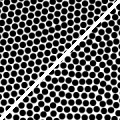
Artefact prevention
('Jittering')
Given an area of uniform grey value, the energetically optimal solution is given by a hexagonal arrangement of particles which maximises mutual particle distances. Since our model adheres to physical laws, such structures are well visible in the created results as well. While this behaviour is desired for some applications, it is undesired for artistically appealing images (so-called 'Stippling'), or for sampling problems. For such purposes, we suggest to introduce 'Jittering' to the force field induced by the gridpoints. We realise this in terms of a zero-mean perturbation field that we add to the attractive force field induced by the grid. By choosing the weight of influence, we can model the whole range from physically accurate representations to fully artefact-free results. Using this technique, we obtain the best results in the literature for stippling and similar applications.
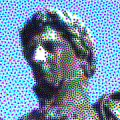
Colour images
Colour images can be handled in a straightforward manner if their colour channels are independent. This is the case for many colour spaces such as CMY, or RGB. Here, it is justified to apply our algorithm to all colour channels separately. In our experiments, we see that this strategy gives nice results with an accurate reproduction of both saturated and dark colours.
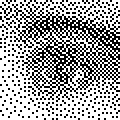
Dithering
Often, it is required to output images in a discrete representation rather than in the continuous domain. Such applications are referred to as Dithering. In our paper, we describe additional forces which tie particles back onto grid locations. In this way, we obtain the best dithering results in the literature so far.
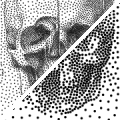
Different point sizes
Output devices usually require a halftoning algorithm to output points of a specific size. This feature is already included in our basic model: One just needs to compute the appropriate charge of the particles from the average grey value of the image and the number of particles desired in such a way that the overall system is electrically neutral.
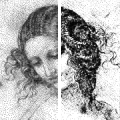
Edge enhancement
Over the last decades, halftoning approaches have been extended by a number of application-dependent features, such as edge enhancement. Since all those characteristics alter the appearance of the result, we see them as a modificator of the input image rather than of the halftoning method. Consequently, we suggest to apply preprocessing steps to the input image before having it halftoned using our model. For the example of edge enhancement, our experiments show that this strategy has a similar effect as in other approaches known in the literature.
MIA Group
©2001-2023
The author is not
responsible for
the content of
external pages.
Imprint -
Data protection